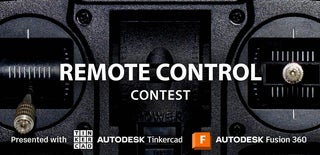Introduction: How to Make a RC DHC-2 Beaver
After building my first RC model I decided to build Famous DHC-2 Beaver which looks great and fly awesomely well also this airplane has a very wide flight envelope, its perfect for all kinds of flyer starting from beginner to experts. its unbelievably docile in air and flies like a breeze.
Its features the very popular naka 2412 Airfoil which gives its amazing lift to speed ratio. you can choose to fly it as a slow trainer or get the most out of its acrobatics abilities.
Personally, I think the DHC-2 Beaver is stunning, and it would be fantastic if I could create a miniature version of it.
Step 1: What You Are Required
For the Model -
- Rubber wheels or some old toy car wheels https://www.amazon.com/BokWin-Black-Model-Aircraf...
- Packaging Tape and Acrylic colors
- Foam board or depron sheet https://www.amazon.com/Thickness-Polystyrene-Sign...
Scissor & cutter's
Glue gun
Metal wires
Plywood for landing gears
Plywood for motor mounting
For the Electronics -
- RC Transmitter & Receiver
- RC Brushless motor
- lipopolymer battery 2200 mAh
- Digital servos
- ESC ( Electronic speed controller )
- Servos extension and Y harness extensions
- 1045 propeller
Step 2: Design & Schematic's
- Here are the schematics for the plane I designed; simply copy all of the parts onto foam sheet and cut them out using a cutter.
Dimensions and other information can be found in the schematics.
Step 3: The Fuselage
- For making the fuselage refer to design & schematics.
- Copy all the parts of fuselage onto the foam board and cut them with the cutter.
- Now for the structure of fuselage we will make internal strength structure and divide the fuselage into three compartments as shown in the above images.
- We'll stick another layer of foam to cover the fuselage bottom once we've finished with the landing gear assembly.
Step 4: The Tail Section
- We'll now put the fuselage and stabilizers together.
- Make a cut at the end of the fuselage for the horizontal stabilizer to be inserted.
- Do the same thing with the vertical stabilizer. Make a horizontal cut in the middle and insert the vertical stab.
- Now glue the horizontal and vertical stabilizer to the tale section.
Step 5: The Wing
- This is the most crucial section, as it determines the characteristics of your airplane.
- Take a thin steel rod and some foam strips and glue them on the dot lines image1 to make the wing.
- Apply heat to the wing and fold it from the dark line as shown in image 1.
To create the ailerons, we'll make two 30-cm partial cuts on each ends of the wing, make V cuts, and use packaging tape as hinges so they can move in both directions.
Step 6: The Landing Gear
- To make the landing gear assembly refer to the schematics and bend the metal wire and attach the wheels using washers and nuts.
- You can use different methods and your ideas to make this part since their are many different ways to make landings gear.
- Once done attach it to the plywood and glue it to the fuselage.
Step 7: The Motor Mount
- For the motor mount take the motor on the plywood piece, then stick the plywood at the leading edge, keeping in mind that the motor should be facing downwards; because the angle counts, the push will generate downwards, allowing lift to be created.
- Now Glue the motor mount with glue gun in front of the fuselage and cover the motor mount with the packaging tape.
Step 8: The Electronics
- When it comes to electronics, you should choose properly because they will determine how well your plane performs.
- For the Brushless motor I will recommend Sunnysky as they are more efficient motors as compared to the others.
- For the ESC I will recommend AVIAN ESC or E- flite ESC as they are smart ESCs and works more efficient.
- For lipo batteries I would recommend Spektrum smart batteries as they give more flight time.
- For servos 10g or 20g digital servos will work great.
- For Transmitter and receiver I would recommend Spektrum NX8 as it allows multiple features .
- For installing the control surfaces we have to install the servo's and control horns on the control surfaces such as rudder, elevator and aileron's.
Step 9: Assembling Everything and Ground Checking Before the Maiden Flight
- We're almost done; all that's left is to foam-coat the bottom and top of the fuselage, as well as create a removable top portion for the front compartment, which will hold the battery.
- Check all the control surfaces before fight and make sure that they are working properly.
- Check CG of the plane before flight.
- Make sure your all electronics are working properly.
We're all set to install the propeller and take the first flight.
Happy Flying :D

Runner Up in the
Remote Control Contest







![Tim's Mechanical Spider Leg [LU9685-20CU]](https://content.instructables.com/FFB/5R4I/LVKZ6G6R/FFB5R4ILVKZ6G6R.png?auto=webp&crop=1.2%3A1&frame=1&width=306)





